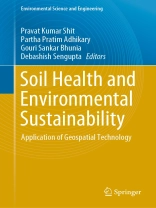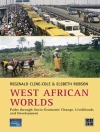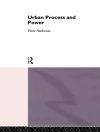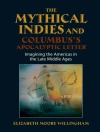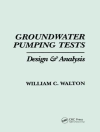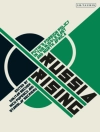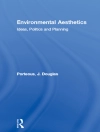This book demonstrates the measurement, monitoring, mapping and modelling of soil pollution and land resources. This book explores state-of-the-art techniques based on open sources software & R statistical programming and modelling in modern geo-computation techniques specifically focusing on the recent trends in data mining/machine learning techniques and robust modelling in soil resources.
Soil and agricultural systems are an integral part of the global environment and human well‐being, providing multiple goods and services essential for people worldwide and crucial for sustainable development. Soil contamination is an environmental hazard and has become a big issue related to environmental health. The challenge of the twenty-first century is to reduce the contaminant load and bring it to below permissible level. The contamination is not only a problem affecting local environments at the place of occurrence but also spreading to other regions because of easy transportation ofpollutants. This leads to direct and indirect contamination of land and aquatic systems, surface water and groundwater, inducing significant risks for natural ecosystems.
In this context, the spatial modelling, prediction, efficient use, risk assessment, protection and management of soil resources in the agriculture system are the key to achieving sustainable development goals and ensuring the promotion of an economically, socially and environmental sustainability future. The aim of this book on soil contaminants and environmental health: application of geospatial technology is to identify the soil and sediment quality, sources of contaminants and risk assessment and focuses on the decision-making and planning point of view through GIS data management techniques.
This book covers major topics such as spatial modelling in soil and sediments pollution and remediation; radioactive wastes, microbiology of soil and sediments, soil salinity and sodicity, pollution from landfill sites, soil erosion and contamination from agricultural activities, heavy metal pollution and health risk; environmental impact and risk assessment, sustainable land use, landscape management and governance, soil degradation and risk assessment, agricultural soil pollution, pollution due to urban activities, soil pollution by industrial effluents and solid wastes, pollution control and mitigation in extreme environments. The content of this book is of interest to researchers, professionals and policy-makers whose work is in soil science and agriculture practices. The book equips with the knowledge and skills to tackle a wide range of issues manifested in geographic data, including those with scientific, societal and environmental implications.
Tabla de materias
Application of RS-GIS-R for soil-land resources assessment, monitoring, and modelling.- Assessment of soil health and monitoring.- Soil and sediments pollution.- Microbiology of Soil and Sediments.- Soil Salinity and Sodicity.- Soil erosion and contamination from agricultural activities.- Digital soil mapping and carbon stock modelling.- Soil degradation and Risk assessment.- Agricultural Soil Pollution.- Risk Assessment of Heavy Metal Contamination.- Environmental Pollution of Soil and Anthropogenic Impact.- Soil pollution by industrial effluents and solid wastes.- Environmental impact and risk assessment.- Open source satellite data and GIS for soil resources mapping and monitoring.- Bioremediation in soil resources management and land use planning.
Sobre el autor
Pravat Kumar Shit (Ph.D.) is Assistant Professor at the PG Department of Geography, Raja N. L. Khan Women’s College (Autonomous), West Bengal, India. He received his M.Sc. & Ph.D. degrees in Geography from Vidyasagar University and PG Diploma in Remote Sensing & GIS from Sambalpur University. His research interests include applied geomorphology, soil erosion, groundwater, forest resources, wetland ecosystem, environmental contaminants & pollution and natural resources mapping & modelling. He has published eighteen books (Springer-13, Elsevier-02, CRC Press-01) and more than 75 papers in peer-reviewed journals and 74 chapters. He is also Guest Editor of “Environmental Science and Pollution Research” and “Applied Water Science”. He is currently Editor of the GIScience and Geo-environmental Modelling (GGM) Book Series, Springer Nature.
Partha Pratim Adhikary (Ph.D.) is Senior Scientist at ICAR-Indian Institute of Water Management, Bhubaneswar, India. He obtained his Ph.D. in Agricultural Physics from ICAR-Indian Agricultural Research Institute, New Delhi, India. His research interests include solute transport, soil and water conservation and management, pedotransfer functions and geospatial modelling of natural resources. Dr. Adhikary has published more than 60 research papers in peer-reviewed journals and 8 books. His other publications include chapters, popular articles, technology brochures, technical bulletins, and scientific reports. He is Associate Editor of Indian Journal of Soil Conservation. He is also Guest Editor of “Environmental Science and Pollution Research” and “Applied Water Science”. Currently, he is Editor of Springer Nature book series GIScience and Geo-environmental Modelling.
Gouri Sankar Bhunia (Ph.D.) received Ph.D. from the University of Calcutta, India, in 2015. His Ph.D. dissertation work focused on environmental control measures of infectious disease using geospatialtechnology. His research interests include environmental modelling, risk assessment, natural resources mapping and modelling, data mining and information retrieval using geospatial technology. Dr. Bhunia is Associate Editor and on the editorial boards of three international journal in Health GIS and Geosciences. Dr. Bhunia has published more than 75 articles in various journals in Scopus indexed. He is currently Editor of the GIScience and Geo-environmental Modelling (GGM) Book Series, Springer Nature.
Prof. (Dr.) Debashish Sengupta is working as Professor, Higher Administrative Grade and Former Head of the Department of Geology and Geophysics in Indian Institute of Technology (IIT) Kharagpur, West Bengal, India. Prof. Sengupta has more than 30 years of teaching and research experience. He has completed his Ph.D. in 1987 in Applied Geophysics. His areas of interests are nuclear geophysics including petroleum logging using subsurface nuclear data, radioactive methods and geochronology, radon emanometry and its applications, applications of isotopes and radionuclides in earth and environmental geosciences, heat flow and geothermics. Prof. Sengupta has 110 research publications in international journals and more than 60 papers in conference proceedings apart from a large number of invited talks delivered both in India and abroad. The research work has been seminal and resulted in the formulation of environmental regulation policies in various countries both in India and countries like USA, South America and the European Union. Prof. Sengupta had also been Visiting Professor at the University of Sao Paulo, Brazil, and as Senior Visiting Professor at the University of Salamanca, Spain, earlier, while on a sabbatical leave from the institute. He has received Society of Geoscientists and Allied Technologists (SGAT’s) Award of Excellence in Earth Sciences for the year 2003. Prof. Sengupta has published four (05) books.
